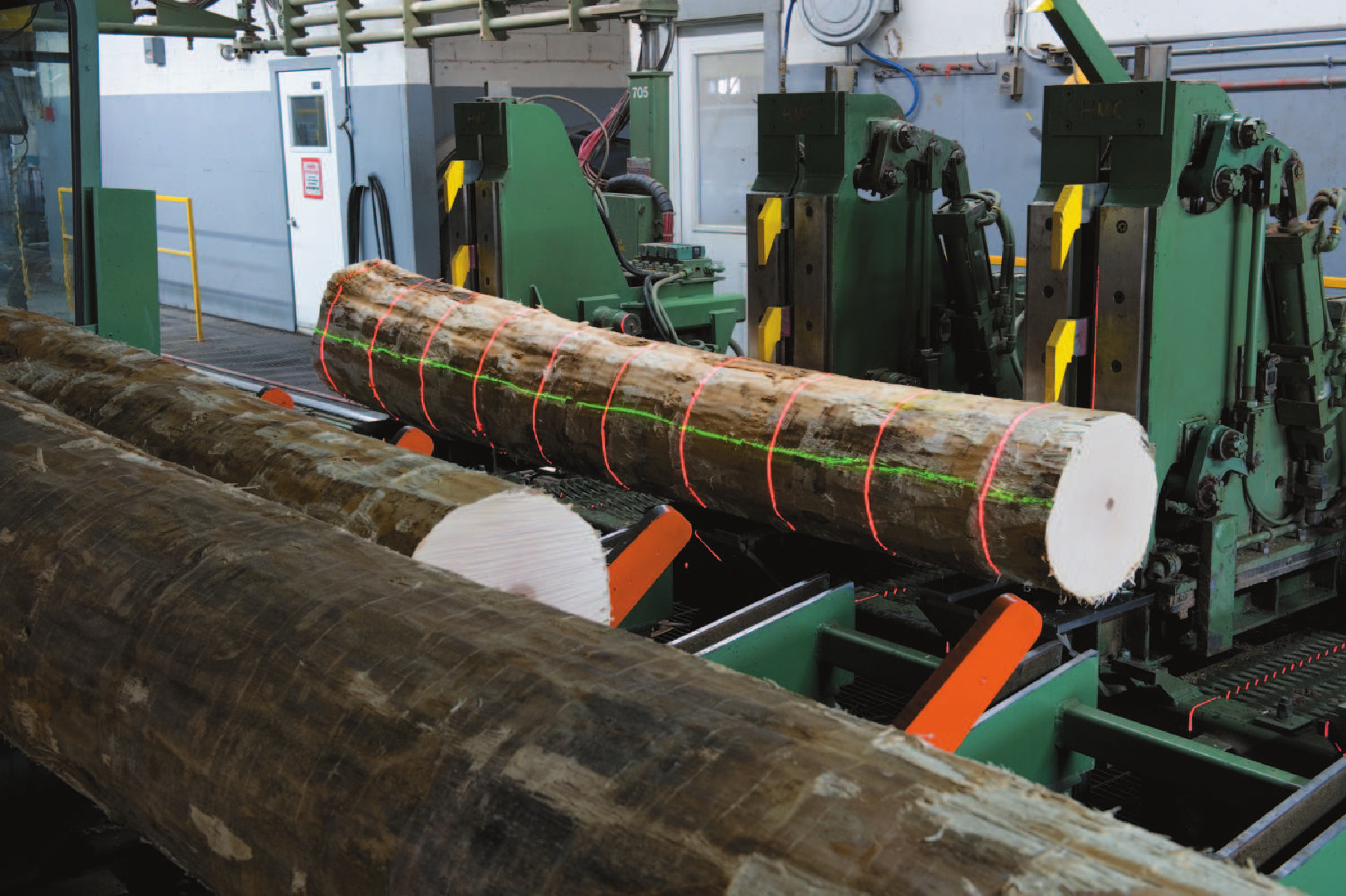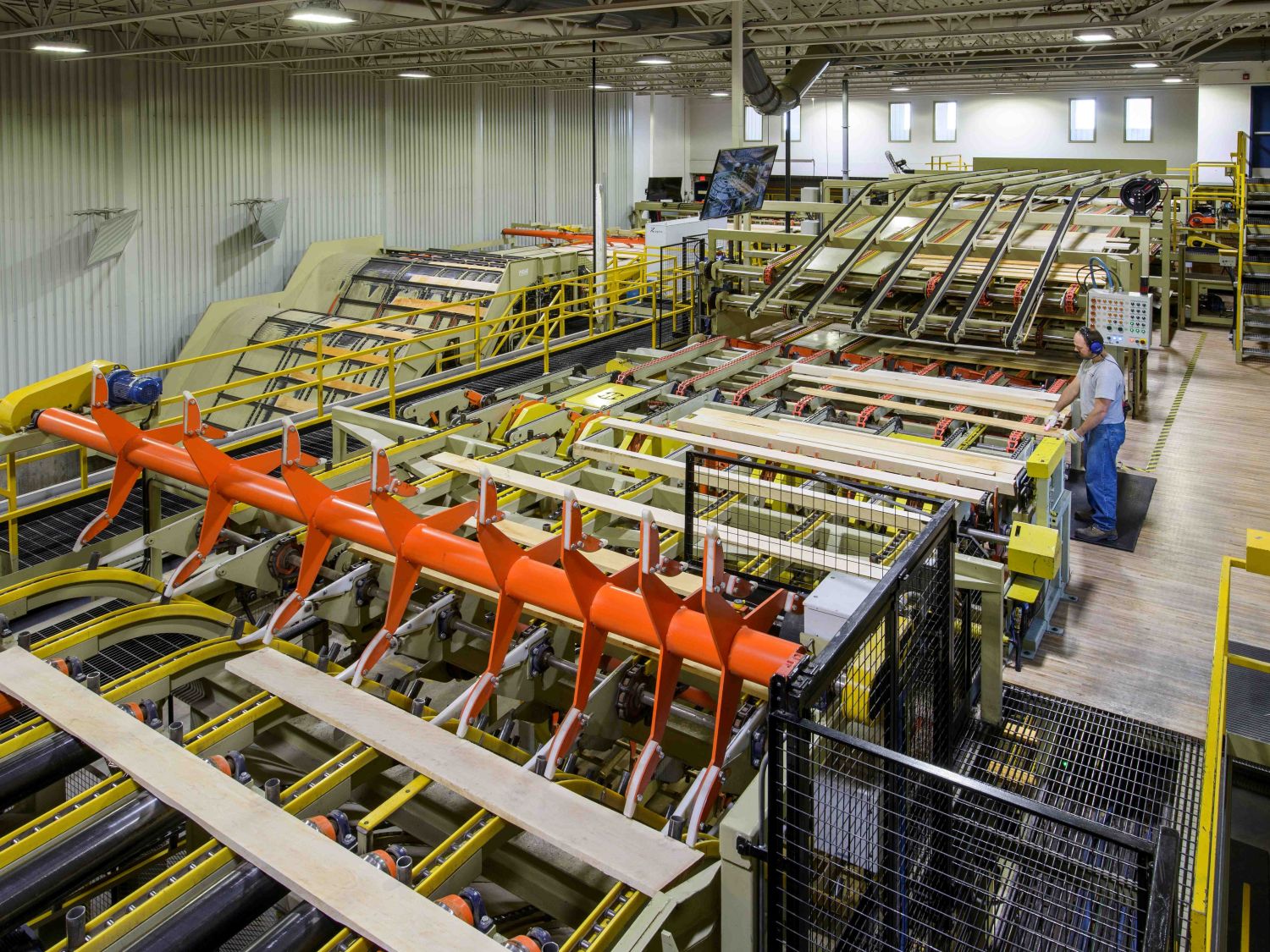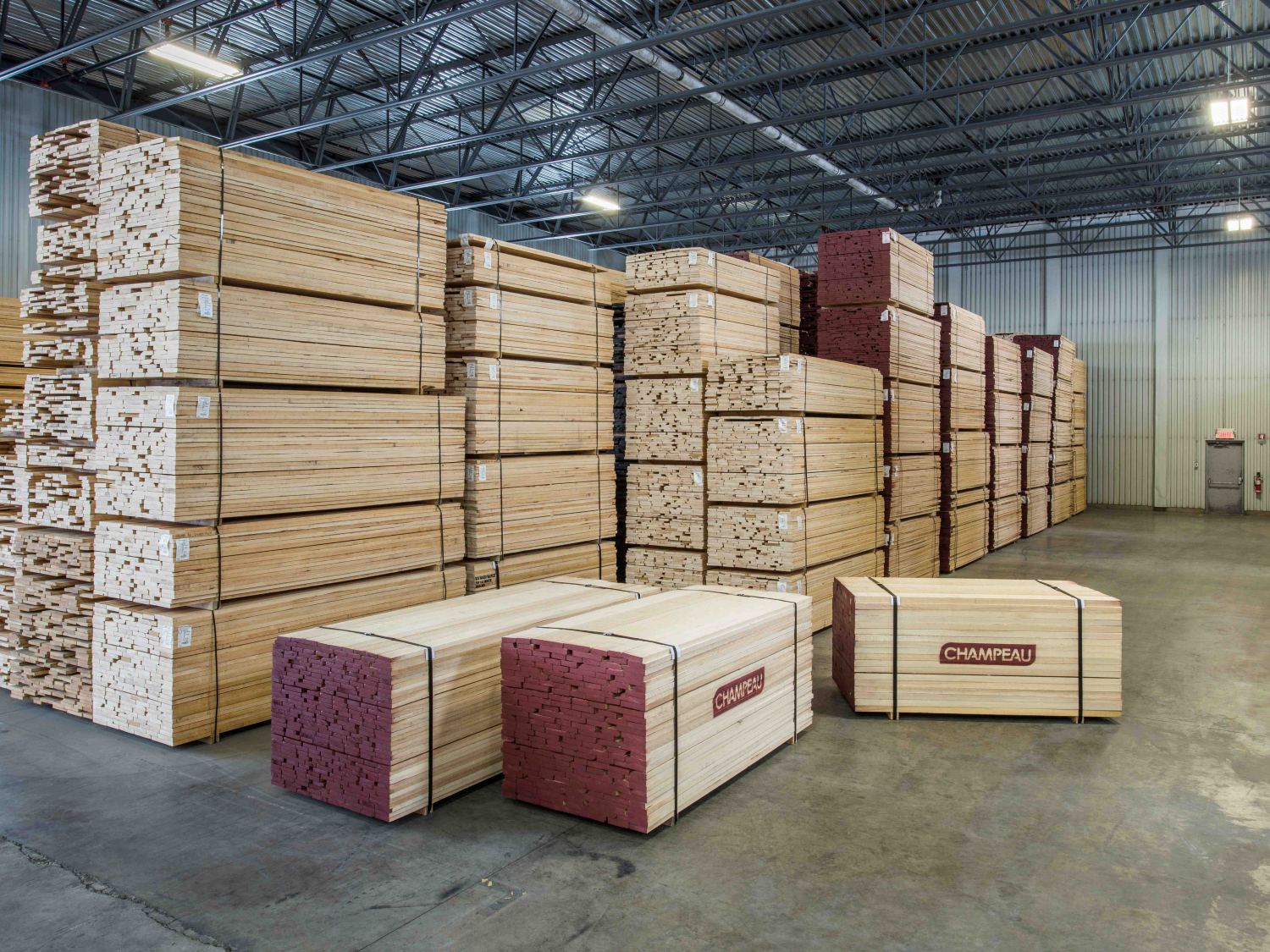Champeau is a fifth-generation family-owned company specializing in hardwood product manufacturing. Operating from facilities spanning 225,000 square feet with over 230 dedicated employees, we specialize in both primary and secondary wood transformation.
Wood is a versatile and timeless material, but its journey from forest to finished product involves intricate processes known as wood transformations.
At Champeau, we take pride in our ability to optimize every step of the transformation process, ensuring maximum precision, flexibility, value and sustainability.
Let’s explore the key stages of wood transformation.
What are the Stages of Wood Transformation?
Wood transformation is a critical process that turns raw logs into high-quality materials and finished products for a wide range of industries.
While primary and secondary transformations are the core stages of wood processing, additional steps may be added depending on the industry and the complexity of the final product.
An overview of wood transformation stages:
- Primary Transformation: The initial stage of processing raw logs into basic wood products.
- Secondary Transformation: The second stage which refines semi-finished wood into finished components or products.
- Third Transformation: Further customization or assembly of components into complex products (e.g., crafting a guitar from pre-shaped wood components).
- Recycling and Repurposing: Transforming waste wood or used wood products into new materials (e.g., particleboard, mulch, or bioenergy).
These stages are critical to maximizing the value of this natural resource while meeting the precise needs of various industries.
In this article, we’ll explore Champeau’s specialty, primary and secondary transformations, their differences, and how they contribute to creating high-quality wood components for diverse applications.
What is the Primary Transformation of Wood?
The primary transformation begins with raw material sourced directly from the forest: logs. These logs undergo several steps to prepare them for further use.
The process includes:
- Debarking: Removal of the bark from the log
- Sawing: Cutting the log into boards
- Edging: Cutting the edges of the live-edge boards to obtain rectangular shapes
- Trimming: Cutting the ends of the boards to obtain the desired length
What makes this process fascinating is the uniqueness of each log and the need to optimize each cut to maximize the value of the wood.
Each log presents its own challenges and opportunities, making the process both complex and rewarding.
The goal is to produce rough-sawn customized lumber that can be further refined in the next stage.
What is the Secondary Transformation of Wood?
Secondary transformation starts with the products of primary transformation, mainly dried boards of rectangular or square shapes. This stage focuses on creating more refined and specialized products, closer to their final use.
The process includes:
- Ripping & Cross-Cutting: Optimization of boards in length, width, and thickness
- Production of elements with precise characteristics and specifications
- Adding value through processes such as artificial intelligence optimisation, planing, molding or laminating.
This stage is all about adding value by producing components that are as close as possible to the final product specifications and ensuring that each piece is tailored to the client’s needs.
What are the Main Differences Between the Two Stages?
The main difference between these two transformation stages lies in the raw material used and the proximity to the final product.
Key Differences:
- Raw Material: The first transformation uses raw logs, while the second transformation works with pre-processed and dried lumber.
- Proximity to End Use: The second transformation is more closely aligned with the final product, as it involves creating components that meet precise specifications for specific applications.
- Precision: The second transformation requires greater precision and attention to detail, as the components must adhere to strict quality standards.
What Customized Solutions Do We Offer?
At Champeau, we produce a wide range of high-quality wood components designed to meet the diverse needs of our clients. Performing first and second transformations at our sawmill is a key step in turning raw logs into high-quality components for our clients in various industries.
From solid and laminated hardwood squares to precision-cut dimension stock, our product portfolio includes:
- Hardwood dowels
- Billiard and snooker cue components
- Baseball bat billets
- Guitar neck components
- Drumstick components
- Furniture, kitchen cabinets, stairs & flooring parts
What sets us apart is our ability to deliver customized solutions tailored to the unique demands of each client.
For example:
- Baseball Bat Billets: We sort billets by weight and grain straightness to meet the exact specifications of baseball bat manufacturers.
- Aesthetic Customization: We adjust sawing patterns to achieve the desired visual appeal, such as controlling the presence of natural imperfections in specific sections of the board.
- Quality and Cost Optimization: We fine-tune defect tolerances to strike the perfect balance between quality and pricing, ensuring our clients receive the best value.
How do we Ensure Quality at Every Step?
Quality is at the heart of everything we do. Each wood component undergoes rigorous inspections, including at least three human quality checks and one AI-powered scan, before reaching the client.
We continuously improve our production technologies to enhance defect detection and maintain traceability for every board, allowing us to quickly address any issues and ensure consistent quality.
Our deep understanding of wood as a material, combined with flexible production capabilities and advanced technology, allows us to produce high-volume components with precise specifications.
This approach minimizes waste and inefficiencies, benefiting both our clients and the entire supply chain.
Why Partner with us?
Our clients consistently praise the uniformity and consistency of our wood products, achieved through our patented Vacubright process and rigorous quality controls. For example, manufacturers of musical instruments and sports equipment frequently highlight the exceptional stability, colour consistency and overall quality of our components, which not only enhance the performance of their products but also elevate their aesthetic appeal.
We are committed to staying ahead of industry trends and meeting the evolving needs of our clients. Through ongoing investments in cutting-edge technology and process optimization, we continuously push the boundaries of what’s possible with hardwood, ensuring that we deliver innovative and sustainable solutions.
At Champeau, excellence is our standard, and our clients’ needs are at the heart of everything we do. Partner with us to experience the difference that expertise, technology, and unwavering dedication can make.
Contact us to discuss your needs.


